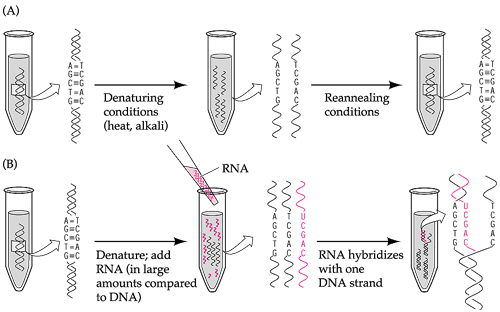Nucleic Acid Hybridization:
Nucleic acid thermodynamics is the learning of how temperature affects the nucleic acid structure of dsDNA (double-stranded DNA). The melting temperature (Tm) is described as the temperature at that half of the DNA strands are in the double-helical state and half are in the random coil state. The Tm is depends on the length of the DNA molecule and its specific nucleotide sequence. The DNA, when in a state where its two strands are dissociated example for the dsDNA molecule exists as two independent strands is provided to as having been denatured through the high temperature.

Nucleic acid hybridization is a fundamental tool in molecular genetics that takes benefits of the ability of individual single-stranded nucleic acid molecules to form double-stranded molecules (which is, to hybridize to each other). For this to occur, the interacting single-stranded molecules must have a sufficiently high degree of base complementarily. Normal nucleic acid hybridization assays included using a labeled nucleic acid probe to recognize associated DNA or RNA molecules (that is ones with a considerably high degree of sequence similarity) within a complex mixture of unlabeled nucleic acid molecules, the goal nucleic acid.